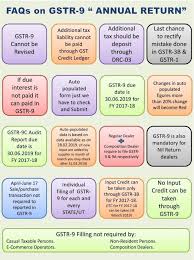GSTR 9: Everything You Need to Know for Filing

Introduction to GSTR 9
GSTR 9 is an annual return that must be filed by registered taxpayers under the Goods and Services Tax (GST) regime in India. This return summarizes all the outward and inward supplies made during the financial year. The importance of filing GSTR 9 cannot be overstated, as it ensures compliance with tax regulations and aids in determining the tax payable or refundable.
Key Features of GSTR 9
1. Who Needs to File? – All regular taxpayers under GST must file GSTR 9, while composition taxpayers are exempt. The filing applies to both goods and service providers.
2. Components of GSTR 9: The return consists of various components including details of outward supplies, inward supplies, and tax liability. Taxpayers must accurately consolidate their monthly GSTR 1 and GSTR 3B filings into this annual return.
3. Filing Deadline: The due date for filing GSTR 9 is December 31st of the subsequent financial year. For the financial year 2022-23, the return must be filed by December 31, 2023.
Importance of GSTR 9 Filing
Filing GSTR 9 is crucial for maintaining transparency in business operations. It aids in reconciling taxes paid and ensures that businesses can claim input tax credits appropriately. Moreover, timely filing helps businesses avoid penalties and potential legal issues with the tax authorities.
Conclusion
In conclusion, GSTR 9 is more than just an annual compliance requirement; it serves as an essential tool for GST compliance, financial planning, and transparency in business practices. Taxpayers must adhere to the timelines and ensure accuracy in their submissions to maintain good standing with the tax department. As the GST framework evolves, staying informed about changes in filing requirements will be vital for businesses to thrive in a compliant environment.









